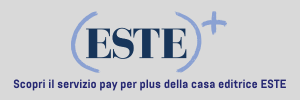
Lavoro da remoto e work-life balance: gestire le interruzioni. La bibliografia
Pubblichiamo di seguito la bibliografia completa dell’articolo Lavoro da remoto e work-life balance: gestire le interruzioni, scritto da Ferdinando Paolo Santarpia, Giulia Colantonio, Pietro Menatta, Laura Borgogni e Chiara Consiglio, sul numero di maggio-giugno 2020 di Sviluppo&Organizzazione.
Allen T. D. (2001), “Family-supportive environments: the role of organizational perceptions”, Journal of vocational behavior, 58, 414-435.
Allen T. D., Cho E., Meier L. L. (2014), “Work-family boundary dynamics”. Annual review of organizational. Psychology and organizational behavior, 1 (1), 99-121.
Amstad F. T., Meier L. L., Fasel U., Elfering A., Semmer N. K. (2011), “A meta-analysis of work-family conflict and various outcomes with a special emphasis on cross-domain versus matching-domain relations”, Journal of occupational health psychology, 16 (2), 151.
Ashforth B. E., Kreiner G. E. e Fugate M. (2000), “All in a day’s work: boundaries and micro role transitions”, Academy of management review, 25, 472-491.
Borgogni L., Dello Russo S. D. (2013), A quantitative analysis of the high performance cycle in Italy, in Locke E. A., Latham G. P. (a cura di), New developments in goal setting and task performance, Routledge/Taylor e Francis Group, New York, 270-283.
Chesley N. (2005), “Blurring boundaries? Linking technology use, spillover, individual distress and family satisfaction”, Journal of marriage and family, 67, 1237-1248.
Frese M., Fay D., Hilburger T., Leng K., Tag, A. (1997), “The concept of personal initiative: operationalization, reliability and validity in two German samples”, Journal of occupational and organizational psychology, 70 (2), 139-161.
Frone M. R. (2003), Work-family balance, in Quick J. C., Tetrick L. E. (a cura di), Handbook of occupational health psychology, American psychological association, Washington DC, 143-162.
Greenhaus J. H., Allen T. D. (2011), Work-family balance: a review and extension of the literature, PsycInfo database record (c) 2019 APA.
Greenhaus J. H., Beutell N. J. (1985), “Sources of conflict between work and family roles”, Academy of management review, 10 (1), 76-88.
Hunter E. M., Clark M. A., Carlson D. S. (2019), “Violating work-family boundaries: reactions to interruptions at work and home”, Journal of management, 4 5(3), 1284-1308.
Kossek E. E. (2016), “Managing work-life boundaries in the digital age”, Organizational dynamics, 45 (3), 258-270.
Kossek E. E., Lautsch B. A., Eaton S. C. (2005), Flexibility enactment theory: implications of flexibility type, control and boundary management for work-family effectiveness, in Kossek E. E., Lambert’s S. J., Work and life integration: organizational, cultural and individual perspectives, Lawrence Erlbaum Associates, Mahwah (NY), 243-261.
Kossek E. E., Ruderman M. N., Braddy P. W., Hannum K. M. (2012), “Work-nonwork boundary management profiles: a person-centered approach”, Journal of vocational behavior, 81 (1), 112-128.
Jett Q. R., George J. M. (2003), “Work interrupted: a closer look at the role of interruptions in organizational life”, Academy of management review, 28, 494-507.
Marks S. R., MacDermid S. M. (1996), “Multiple roles and the self: a theory of role balance”, Journal of marriage and the family, 417-432.
Matthews R. A., Barnes-Farrell J. L., Bulger C. A. (2010), “Advancing measurement of work and family domain boundary characteristics”, Journal of vocational behavior, 77, 447-460.
Matthews R. A., Winkel D. E.,Wayne J. H. (2014), “A longitudinal examination of role overload and work-family conflict: the mediating role of interdomain transitions”, Journal of organizational behavior, 35 (1), 72-91.
Morgeson F. P., Humphrey S. E. (2006), “The work design questionnaire (WDQ): developing and validating a comprehensive measure for assessing job design and the nature of work”, Journal of applied psychology, 91 (6), 1321.
Netemeyer R. G., Boles J. S., McMurrian R. (1996), “Development and validation of work-family conflict and family-work conflict scales” Journal of applied psychology, 81 (4), 400-410.
Ten Brummelhuis L. L., Bakker A. B. (2012), “A resource perspective on the work-home interface: the work-home resources model”, American psychologist, 67 (7), 545.
Zijlstra F. R. H., Roe R. A., Leonora A. B., Krediet, I. (1999), “Temporal factors in mental work: effects of interrupted activities”, Journal of occupational and organizational psychology, 72 (2), 163-185.
Zijlstra F. R., Sonnentag S. (2006), “After work is done: psychological perspectives on recovery from work”, European journal of work and organizational psychology, 15 (2), 129-138.
L’articolo integrale è pubblicato sul numero di maggio-giugno 2020 di Sviluppo&Organizzazione.
Per informazioni sull’acquisto di copie e abbonamenti scrivi a daniela.bobbiese@este.it (tel. 02.91434400)
Smart working, interruzioni famiglia-lavoro, interruzioni lavoro-famiglia, gestione dei conflitti







